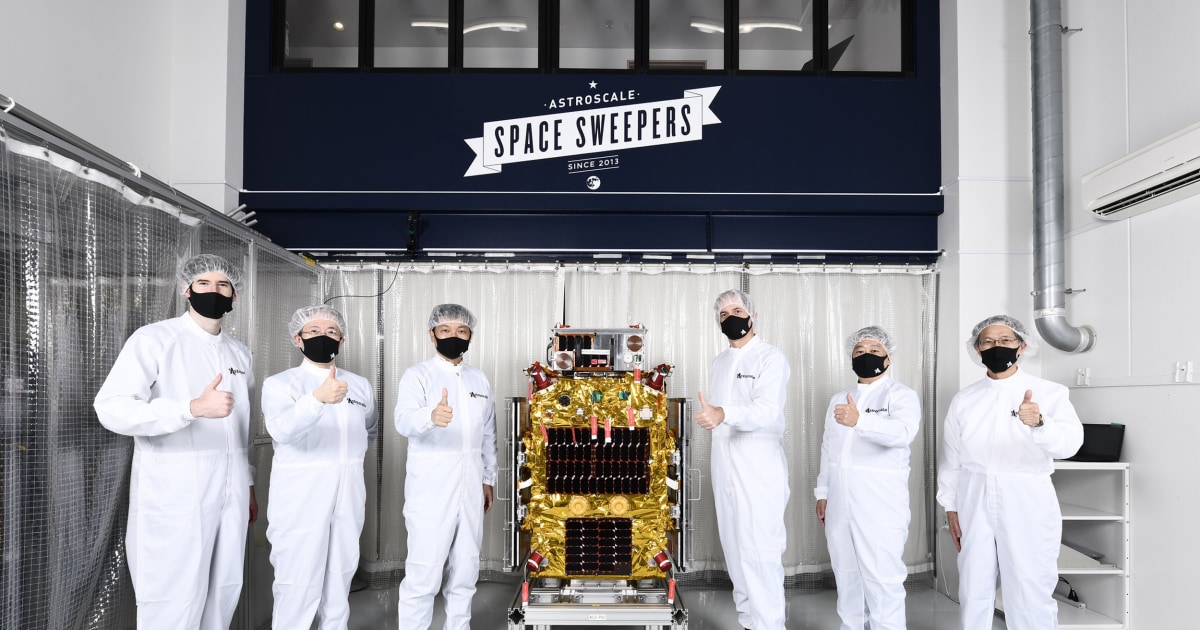There is a growing junkyard in space.
The orbit of Low Earth, a narrow strip of space relatively close to the Earth’s surface, is filled with thousands of tons of space debris – objects as large as extinct satellites and parts of rockets worn down to nuts, bolts and paint stains.
On Saturday, a new mission is due to be launched with the aim of cleaning up some of the debris that is languishing in orbit around the planet. Known as ELSA-d, the mission will test technologies to capture an object in low Earth orbit and move it to a lower altitude, where it will eventually burn harmlessly in the Earth’s atmosphere.
If successful, ELSA-d can pave the way for future commercial services that reduce the amount of debris in space and promote more sustainable operations in orbit.
Concerns about space debris have increased in recent years, as the Earth’s low orbit has become more congested and society’s dependence on satellite systems for telecommunications, GPS and a myriad of other everyday functions has grown. Overcrowding in orbit is also exacerbated by companies like SpaceX and OneWeb, which are building huge “megaconstellations” of Internet satellites around the Earth.
Pieces of space junk, which fly in orbit at up to 18,000 miles per hour, could threaten other functioning spacecraft and pose risks to the safety of astronauts on the International Space Station.
Astroscale, the private company behind the ELSA-d mission, hopes that its technologies will open up a market for the removal of orbital debris.
“This is a problem similar to that of plastics in the ocean,” said John Auburn, managing director at Astroscale in the United Kingdom. “We have been working for eight years to turn a difficult problem into a business.”
The ELSA-d mission is scheduled to take off on Saturday from the Baikonur Cosmodrome in Kazakhstan at 2:07 am Eastern Time. The technology demonstration will be carried out by two spacecraft launched together: a nearly 400-pound “service satellite” and a 40-pound “client satellite” that is being used to simulate an orbital fragment.
In the coming months, the two satellites will separate and then engage in an elaborate orbital cat and mouse game. In a series of tests, the servicer satellite will attempt to meet with the customer’s spacecraft, dock the object and then release it.
“It is extremely complex because you have to correspond exactly to the movement of the spacecraft that is docking,” said Auburn. “When a spacecraft docks with the International Space Station, it is a very controlled maneuver. But if you are trying to dock with a failed satellite, it may be falling and you have to approach very slowly, almost as if you were dancing.”
The mission will also test a magnetic coupling plate that could be installed on future satellites before they are launched, which would provide a way for these spacecraft to be safely removed from orbit after they are deactivated.
ELSA-d will operate for about six months. At the end of the mission, the service and customer satellites will be commanded to burn in the Earth’s atmosphere.
Aaron Rosengren, assistant professor of mechanical and aerospace engineering at the University of California, San Diego, said the ability to remove debris from low Earth orbit will be critical to continuing operations in space.
“Although the space is large, the usable orbits where we keep our satellites are very small,” said Rosengren. “If we have an increasing density of objects in these very narrow regions of space, this will lead to more collisions over time.”
One of the most notable examples of an orbital accident occurred in 2009, when an extinct Russian satellite known as Cosmos 2251 collided with a US-based Iridium 33 communications satellite. The collision created a cloud of more than 2,000 pieces of space debris measuring at least 10 centimeters wide.
It is estimated that these fragments will remain in orbit for decades or more, presenting risks of collision that can further aggravate the problem.
The International Space Station has been hit by space debris in the past, and throughout the station’s history, NASA has had to perform at least 26 special maneuvers to avoid rebel objects that wandered very close to the orbiting outpost. In 2020 alone, the agency had to perform three of these maneuvers, according to former NASA administrator Jim Bridenstine.
“@Space_Station maneuvered 3 times in 2020 to avoid debris. In the last 2 weeks, there were 3 conjunctions of high potential for concern. The wreckage is getting worse! ” Bridenstine tweeted on September 22, 2020.
These high-level events demonstrate the real danger posed by space debris, said Rosengren. Without a way to clean up the limited space around the Earth, this valuable property could one day become unusable, he added.
“We may already be at that tipping point,” he said. “There are tens of thousands of objects in this region, but we don’t have an understanding of the carrying capacity of the orbits. How much is too much?”


